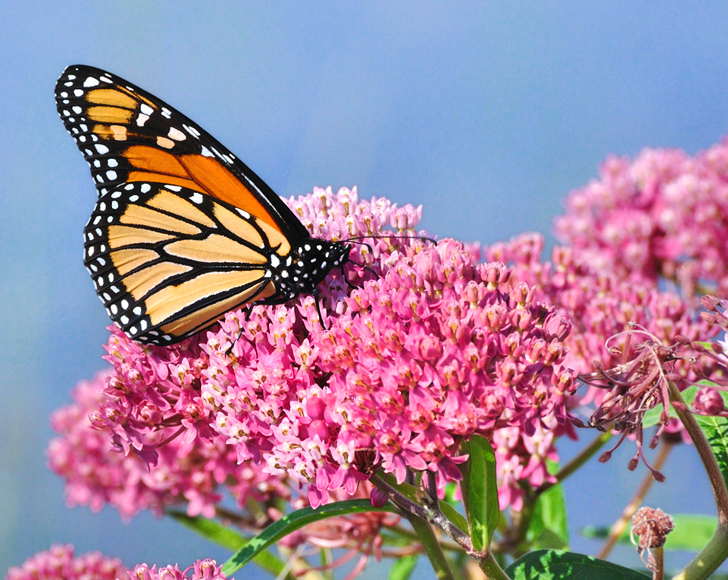Wildlife in the Environment
“DAD! A BUMBLEBEE!” My son yelled excitingly the other day. Of course, it was a dragonfly, but to my two-year-old son, all flying insects are bumblebees. Five minutes later we found ourselves lifting logs, digging through the soil, and scouring the landscape for bugs. My son’s unbridled enthusiasm for insects is an enthusiasm we all should share, especially while knowing their importance in our landscapes and environment.
Insects play a vital role within our environment. Without insects, life on Earth would not exist. Although it is not a widely accepted claim nor completely supported within the scientific community, different articles and publications state insects could be completely wiped out within the next century. Nonetheless, we cannot define environmental health on a dichotomous scale. The benefits of insects cannot be defined by their existence or inexistence. Rather, it should be defined by variables that can include diversity, health, and population. Not only are insects important, but all forms of beneficial wildlife play important roles in our environment. Attracting wildlife is a requirement for creating a sustainable landscape.

Planning for Wildlife in Landscape
As development fragments our natural environment, rethinking our relationship with our landscapes and their management is an utmost priority. The Florida-Friendly Landscaping (FFL) Program’s fifth principle is “Attract Wildlife”. Attracting wildlife to our landscapes includes managing yard pests responsibly (FFL’s sixth principle). Managing yard pests responsibly by following Integrated Pest Management (IPM) strategies protects the beneficial insects and wildlife within our landscapes.
Requirements for Survival
Through planning and designing our landscapes to attract wildlife, our landscapes become biodiversity hotspots to reconnect a fragmenting landscape. To attract wildlife, I think of my time teaching wilderness survival merit badge for Boy Scouts of America. In any survival situation, we prioritize shelter, fire, water, and food, in that specific order. These also relate to Maslow’s Hierarchy of Needs, where the primary needs or survival are our physiological needs of air, water, clothing, warmth, and shelter. Wildlife is the same. Wildlife requires environments providing shelter, water, and food.
Tips for Attracting Wildlife
Of course, you cannot expect to provide one form of shelter or food for your backyard to transform into a biodiversity hotspot that attracts David Attenborough. Our landscapes must provide a diversity of food sources, shelter opportunities, and water availability. By doing so you can attract insects, birds, mammals, etc. Other tips to help attract wildlife to your landscape include, leaving tree snags, manage pets, reduce pesticides by following IPM strategies, reduce the amount of mowed lawn area, increase layering in the landscape (various heights), remove invasive species, increase plant diversity, include more native plant species, and provide feeders and houses.
It Takes a Community
By following these tips, we create a landscape that provides the essentials for wildlife to survive but also an environment for wildlife to reproduce. But we can also consider thinking more broadly, as in scale. We have the ability to create landscapes that attract wildlife, but what if we include our neighbors, neighborhood, or community? Expanding the scale of different landscapes attracts wildlife to support a higher diversity of wildlife.
Landscape Planning Starts Now
Our landscapes serve as aesthetic and functional spaces for us and the beneficial pollinators, insects, and other forms of wildlife. Designing and planning landscapes to attract wildlife is easy and creates a landscape that is more self-sustaining. Therefore, the next time you see a flying insect above your head, yell “Bumblebee!” with an unbridled enthusiasm of a two-year-old. Be excited about their presence and be excited that you are creating an opportunity for our environment to become a little stronger. Then consider the other things you can do to attract more wildlife to your landscape.
Interested in more gardening-related blogs or following Alachua County’s MGVs on Social Media? Check out the additional links from Dr. Clem.
UF/IFAS Alachua County Extension Master Gardeners, Facebook Page
 0
0
